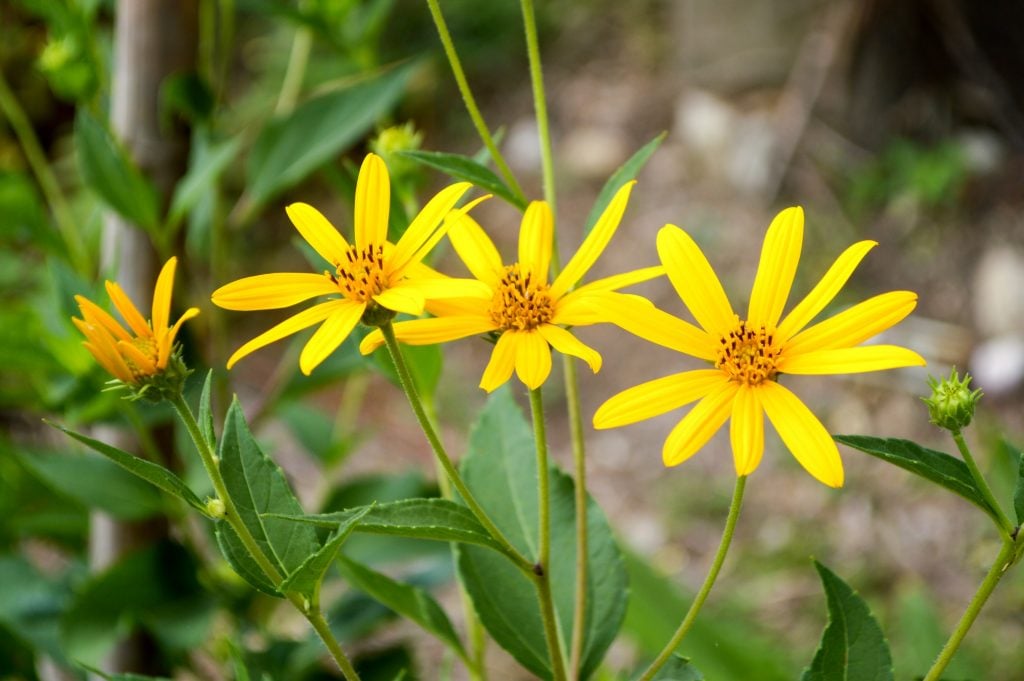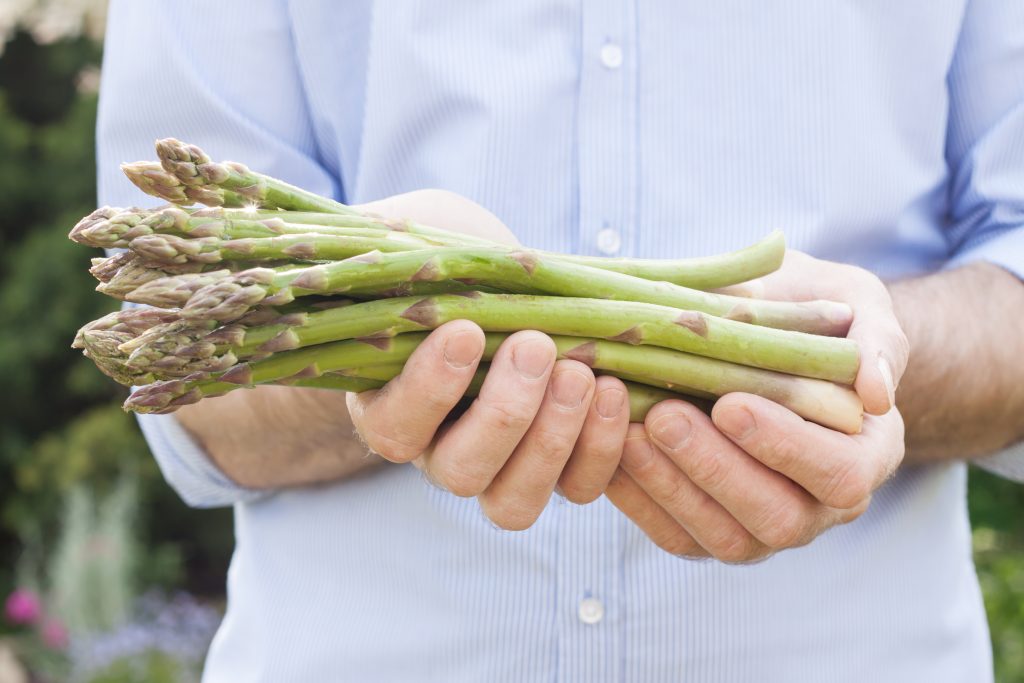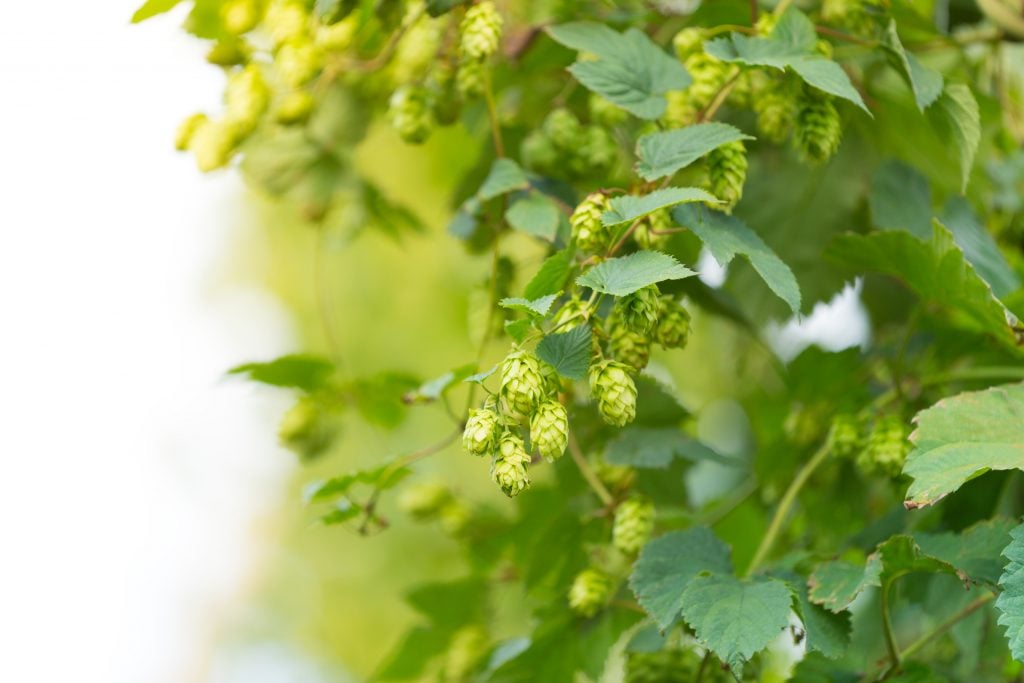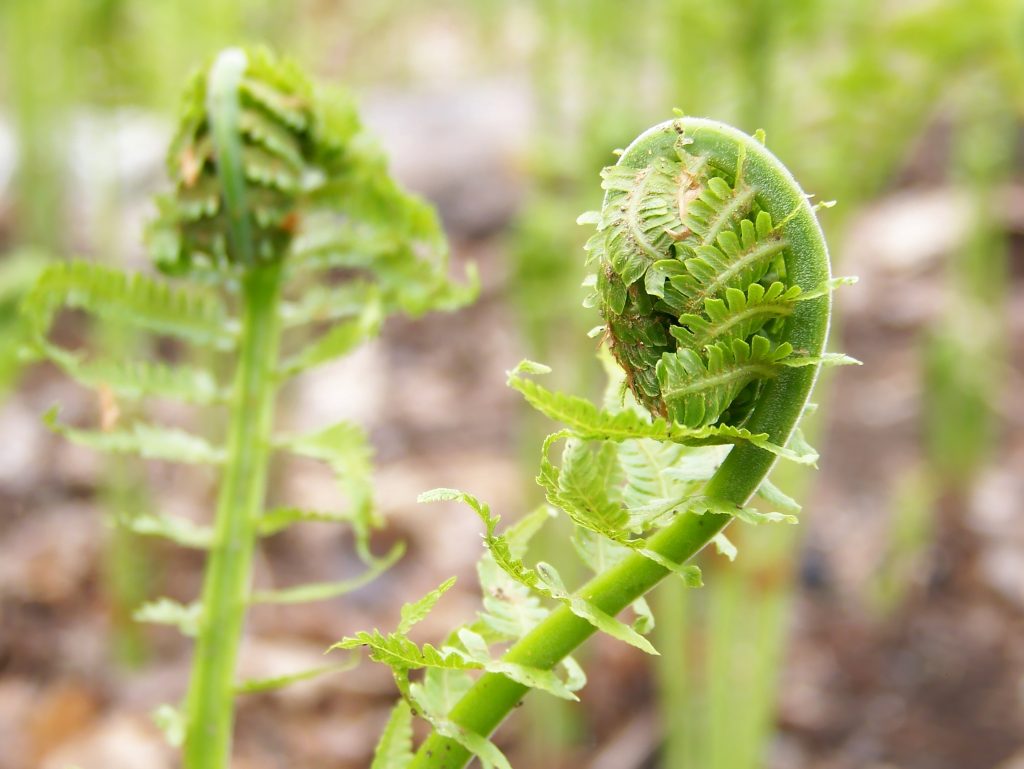Permaculture gardeners grow plants using methods that are more sustainable than conventional methods. This means selecting plants that grow in harmony with the earth (and with one another) to get the best possible outcome for both the gardener and the planet.
If you’re interested in implementing permaculture principles into your own garden, we suggest you check out our guide to starting a permaculture garden, then come back here for ideas and inspiration on which permaculture plants to include! Let’s get started by looking at some common characteristics of permaculture plants.
Characteristics of Permaculture Plants

The correct use of permaculture techniques will help you create a healthier garden, reduce your carbon footprint and help the local insect population thrive. However, you’ve got to pick the correct plants to get the maximum benefit.
Naturally, the plants you choose will depend on where you live and what growing zone you reside in. Keep in mind that permaculture encourages the use of native plants. So the best permaculture plants to use in America or the UK will be different than those suited for Thailand or Brazil.
This article will focus on permaculture plants that thrive in cool or mild temperate climates like those in much of North America and Europe.
No matter what climate you live in, there are some universal characteristics that make a plant a great candidate for use in a permaculture garden. Choose plants that:
Are low maintenance
A garden that (mostly) takes care of itself is a hallmark of permaculture gardening. So select species of plants that thrive even in non-ideal conditions, like poor soil or harsh weather.
Have deep roots
Especially if you’re planting in an area with poor topsoil, deeply-rooted plants are a permaculture gardener’s best friend. They’ll draw nutrients from deeper soil to the surface, where they can be more easily accessed.
Are in the legume family
Legumes are used often in permaculture gardens because they pull nitrogen from the air that other plants can use.
Produce a lot of foliage
Plants that produce a lot of foliage are great for creating mulch in a permaculture garden. Some plants act as a living mulch to retain soil moisture and block sunlight from weeds. Others are pruned and then dropped onto the soil as mulch.
16 Best Plants for Your Permaculture Garden
You may be wondering: How do I make my own permaculture garden? Luckily, creating one doesn’t mean you’re limited to a small selection of plants. There are an abundance of options from which to choose. Here are some of our favorites:
1. Comfrey

Like many of the best permaculture plants, comfrey is considered to be a weed by many farmers and gardeners.
What is a weed though, exactly? It’s just a plant growing where it’s not wanted. If you want it in your garden, then it’s not a weed!
Comfrey has deep taproots that can extend as far as 2 meters into the ground. These roots mine the minerals deep in the subsoil and bring them up to the surface for other plants to use.
While it isn’t edible, comfrey has been used to heal wounds and broken bones, to stop bleeding and for various other folk remedies.
The comfrey plant also produces large amounts of biomass. Its nutrient-rich leaves can be used as a renewable source of mulch, animal fodder or compost.
2. Hazelnut
Hazelnuts can grow as either bushes or small nut trees. They make great windbreaks on their own and form a great permaculture guild (or grouping of plants and trees) with larger trees, like apples.
These trees can tolerate shade, as well as create a neutral buffer to separate plants that don’t do well adjacent to one another.
They produce plenty of high-calorie nuts that can be eaten raw, roasted or used to make oil or flour.
Hazelnuts will live for up to 50 years and make a great addition to your food forest.
3. Jerusalem Artichoke (aka Sunchokes)
Jerusalem artichokes are a favorite permaculture crop of ours because they’re so hardy. They require little maintenance and water besides what they naturally get from rain.
Despite the name, they aren’t artichokes and they aren’t from Jerusalem! They’re actually a plant native to North America in the sunflower family.
They grow tall like a sunflower, with a pretty little yellow flower on top. Sunchokes also produce tasty edible tubers that resemble ginger and store well over winter.
The tall stems of Jerusalem artichokes are strong enough to be used as a trellis for beans and other climbing crops. They even act as a bit of a windbreak.
It’s best to plant these annuals somewhere that you don’t mind them taking over. Since they’re so hardy, the tubers can aggressively spread to form large patches of the plant.
4. Fiddleheads
Fiddleheads are a fern that tastes very similar to asparagus once cooked. They’re only edible for a short period in the spring before they start to unfurl. That makes them a great source of nutrients and vitamins while you wait for the rest of your crops to mature, though.
Most people think of fiddleheads as something that’s foraged from the wild. However, there’s no reason that you can’t add them to your food forest at home. Toss them somewhere shady and wet and they’ll thrive.
5. Mulberry

Here’s another small tree that produces lots of nutritious food.
Mulberries have never gained mass appeal since they don’t stay fresh for long after picking and are easily damaged in transport. That doesn’t mean that they aren’t delicious, though! They’re great for eating fresh off the tree or using to make jams and other preserves.
Mulberry trees grow up quickly and are exceptionally strong, making them a great habitat for birds and other wildlife. Their large leaves produce lots of shade and can also be used as mulch.
Mulberry will stain, so plant your trees away from the house to avoid a mess once fruit starts to drop.
6. Arrowhead
Most of the permaculture plants on this list are land-based, but we had to include one of our favorite water vegetables in case you’ve got a pond on your land.
Arrowhead tubers are tasty and worth rolling up your sleeves to get a bit wet for! They cook like potatoes and have an earthy, nutty flavor.
Give your frogs, turtles, and other bug-catching animals around the pond a shady place to hang out underneath these plants.
7. Mint
Mint is the one plant on this list that everyone will recognize. It’s uses are endless; you can make a sauce to eat with lamb, or brew it into a tasty herbal tea.
Mint is rich in nutrients, good for masking bad breath and can even relieve indigestion.
You’ve probably already heard about how mint can spread like a weed. That makes it a great living mulch to place underneath taller plants.
Bees love mint flowers too, but the smell repels many less-desired types of bugs. So it’s a win-win!
8. Red Clover
Clover makes an excellent cover crop. It prevents erosion and helps block sunlight that causes soil to dry out quickly.
It’s also a nitrogen fixer: a plant that takes nitrogen out of the air and converts it into nutrients in the soil that plants can use. This is great for the long-term health of your soil.
Red Clover is completely edible and most animals love it. So you can let your cows, sheep, goats or other livestock graze on it without issues. Or you can use it to lure in wild species like deer that you may want on your property. Bees also love it and it makes for great-tasting honey.
9. Ramps (aka Wild Leeks)
Like fiddleheads, ramps are a crop that only shows up for a brief time each spring. In fact, ramps only grow in a short window of time after the snow melts and before trees start to regrow their leaves.
That gives you about six to eight weeks to harvest them before they go dormant for the rest of the year. However, you can preserve them by pickling or making them into a pesto for year-round use.
Ramps really like to grow under deciduous trees. So keep that in mind when planning out your permaculture garden. They don’t like to get too hot, and they won’t survive the summer without plenty of shade.
10. Asparagus

The common asparagus plant makes a great permaculture crop, but it does take time to grow. It will be two or three years after you initially plant crowns or seeds before you can start to harvest your first stalks. However, your asparagus will only keep growing back bigger and better each year afterward!
Asparagus is a great permaculture plant since it’s so low-maintenance once it gets established. It will continue producing food year after year. And since it’s hardy and adaptable to a wide variety of climates, it makes a great addition to most gardens.
Asparagus is especially worth having as a companion plant alongside tomatoes. Asparagus repels plant parasites called nematodes in the soil that can harm tomatoes. Meanwhile, tomatoes repel asparagus beetles that feed on the roots of the plant.
You haven’t truly tasted asparagus until you’ve harvested it straight from your garden. Store bought asparagus is usually quite woody and dried-out in comparison. If it’s one of your favorite vegetables, it’s worth planting yourself a little patch!
Want to learn more about producing food? Check out our Permaculture Farming Ultimate Guide.
11. Edible Flowers
There are so many varieties of edible flowers that it’s hard to pick just one.
We recommend picking your favorite flowers to look at, which also make a great addition to salads and other dishes!
Some edible flowers to consider planting are:
- Hibiscus
- Chrysanthemums
- Nasturtiums
- Violets
- Magnolia
Aside from being beautiful to look at, there are practical reasons to include edible flowers in your permaculture garden.
For one, they help to attract pollinators like bees and butterflies. Improved pollination improves the overall crop yield on other fruits and vegetables in the same area. And two, the scent of some edible flowers also helps to deter pests like rodents and deer.
12. Stinging Nettle
When cooked, stinging nettles are delicious and nutritious. You can eat them like steamed spinach, or use them to make soup or tea. They’re high in Vitamin C and other essential minerals, too.
Heating nettles disables their sting and makes them edible. While they’re in the ground, you may have a love/hate relationship with this plant, though. Use gloves and wear long sleeves when harvesting them and you shouldn’t have a problem.
Some people actually come to enjoy the sting, as it may aid in relieving inflammatory conditions like arthritis.
13. Strawberry
Strawberries make for a sweet treat that keeps coming back year after year, as long as you give them the right growing conditions. And unlike some other annual berries (like raspberry), you won’t have to fight through brambles and thorns to get to them.
In addition to being a favorite fruit, strawberries also spread out on the ground as a living mulch and help to retain water on those hot, sunny days.
14. Walking Onions
If you like onions, you may consider adding walking onions to your garden for a lower-maintenance variety. They’re also called tree onions or top setting onions.
Basically, bulbs grow on the tops of the plants, which weigh them down so they bend over and replant themselves.
They will happily grow and spread themselves in your garden without too much care required.
If you’re tired of planting seed onions each year, let this variety do the work for you!
15. Black Locust
Although the black locust tree doesn’t produce anything edible, it has a number of great uses in the permaculture garden.
It’s large enough to act as a fantastic windbreak or hedgerow. Its flowers are excellent for honey bees and other beneficial insects and its wood makes a durable, long-lasting timber.
Plus, black locust seed pods are a nitrogen fixer, and the leaves make a great mulch.
Read more about growing trees in our guide: How To Create a Permaculture Orchard.
16. Hops

No permaculture food forest is complete without some type of vine.
Some people may prefer grapes, beans, peas or hardy varieties of kiwi. But we’re big fans of hops.
Hops vines grow quickly and provide a lot of shade. Their flowers provide pollen for bees as well.
Obviously, hops have long been used primarily for brewing beer. You could definitely try using them to brew your own. However, dried hops can also be combined with lavender to make a soap or placed in pillows as a sleep aid.
Final Thoughts
When selecting your permaculture plants, try to choose plants that work well together and require minimal effort, weeding, watering and fertilizing.
Don’t forget to evaluate your own growing conditions and pick the plants that make the most sense for your own garden.
Choose plants that improve the soil, attract beneficial insects and wildlife, or provide synergistic benefits to other crops that you’re growing. Best of all, try to fit in some permaculture plants that produce food you enjoy eating!
You don’t have to create your entire permaculture garden at once. You can add a few new plants to your backyard and go from there. In a few years, you’ll have established a fantastic permaculture garden.
And if you need some help planning your garden, check out our list of the best permaculture books or the Complete Guide To Online Permaculture Design Courses.
